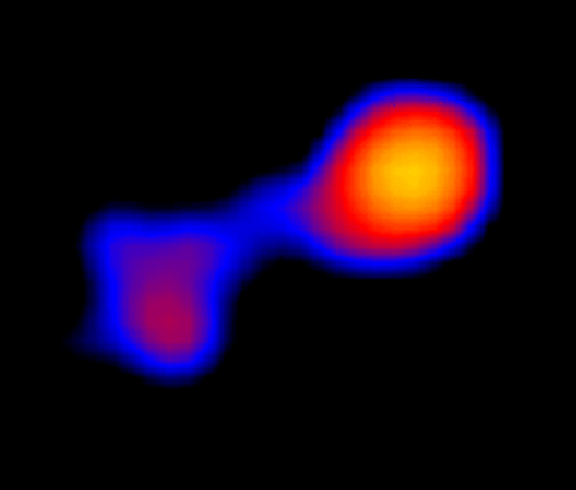The Historical Sunspot Record
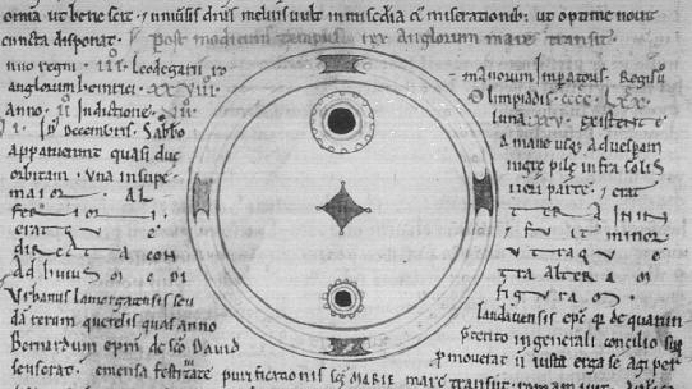
John of Worcester Sunspot Drawing, 1128
Chinese astronomers recorded solar activity around 800 B.C. and astronomers in both China and Korea frequently observed sunspots. However, there are no known early Chinese or Korean illustrations of solar events or sunspot activity. The first person to actually observe and draw pictures of sunspot activity was not Galileo Galilei, as is commonly thought, because an observation of sunspots and the resulting auroral activity appear in the historical record almost 500 years before the invention of the telescope. “In the third year of Lothar, emperor of the Romans, in the twenty-eighth year of King Henry of the English…on Saturday, 8 December, there appeared from the morning right up to the evening two black spheres against the sun." This description of sunspots, and the earliest known drawing of sunspots, appears in John of Worcester’s Chronicle recorded in 1128.
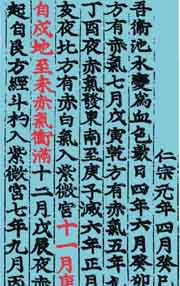
Korean Auroral Text
On the night of 13 December 1128, astronomers in Songdo, Korea, witnessed a red vapour that “soared and filled the sky” from the northwest to the southwest. A delay of five days is the average delay between the occurrence of a large sunspot group near the center of the Sun – exactly as witnessed by John of Worcester – and the appearance of the aurora borealis in the night sky at relatively low latitudes. Chinese accounts state “there was a Black spot within the Sun” on March 22, 1129, which “died away” on April 14th. This may well have been one of the sunspots Worcester had observed 104 days earlier, on the other side of the world.
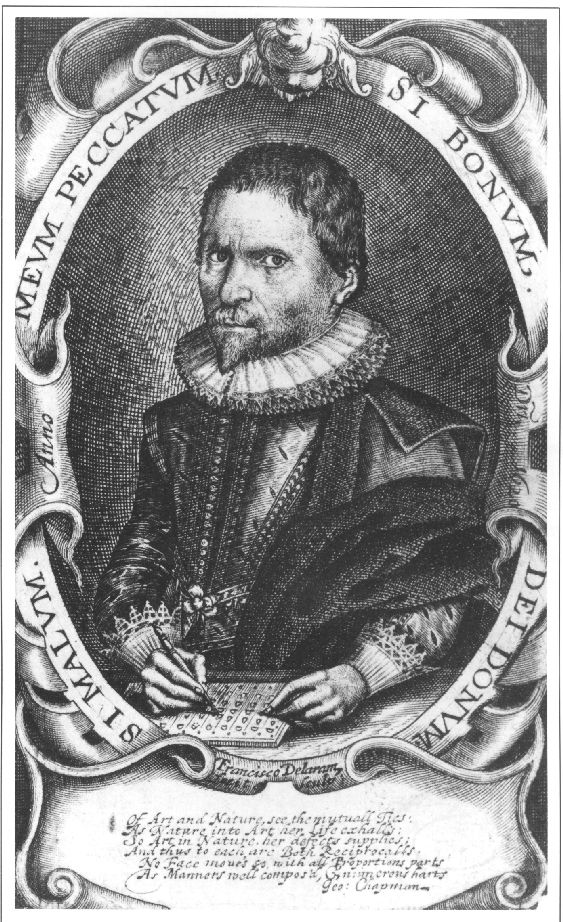
Korean Auroral Text
There was considerable controversy in the early 1600’s as to who was the first to discover and study the sunspot record, as well as the nature of sunspots. Were sunspots on the surface of the Sun – destroying the perfection of the heavens, or were they satellites of the Sun? The earlier Chinese and Korean observations and the illustrated records in John of Worcester’s chronicle were not known by the active observers in the early 1600’s. A page from Thomas Harriot’s notebook, dated 8 December 1610, describes sunspot activity and includes several drawings. This is the earliest known detailed recording of solar observations in the 1600’s and predates Galileo by more than a year. Thomas Harriot also was the first person to make a drawing of the moon through a telescope, on July 26, 1609 – again predating Galileo’s moon drawing by several months.
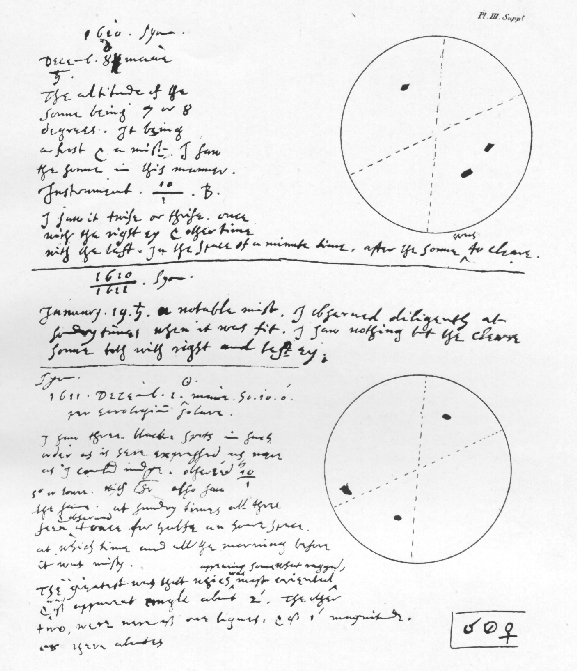
Page from Harriot’s Notebook
Nothing is known of Harriott before he attended the University of Oxford. From there he was employed by Sir Walter Raleigh and joined the 1585 expedition to Virginia primarily as a cartographer, and also for his knowledge of navigation. Harriot published no books. He left a large number of manuscripts on various scientific subjects, and over the past three centuries these have slowly come into the mainstream of historical research. Harriot studied optics – about which he corresponded with Johannes Kepler – and had discovered what is now known as Snell's Law of refraction before Snell did. From 1609 to 1613 he made numerous telescopic observations of the solar system. Although Harriot shared his sunspot observations with a group of correspondents in England, he did not publish them.
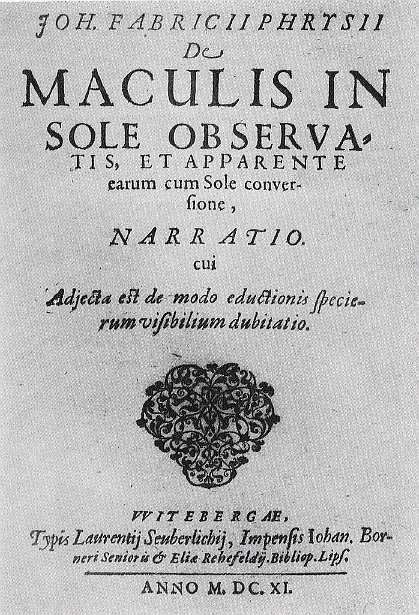
Johannes' Pamphlet
David and Johannes Fabricius (father and son) independently discovered sunspots in March, 1611, and Johannes published their observations in a pamphlet titled “On the Spots Observed in the Sun and their apparent rotation with the sun” in 1611. The pamphlet was printed in Wittenberg, Germany in time for the autumn book fair in Frankfurt. In the tract Johannes discussed the observations made by himself and his father, without giving times or dates or providing illustrations of the sunspots. Because of the lack of a powerful patron interested in scientific matters who might have called Johannes’ little book to the attention of influential people within the scientific community, David and Johannes Fabricius were not important participants in the 1612-1613 debate on the nature of sunspots. By the time Kepler had become aware of its existence the pamphlet had been eclipsed by Christoph Scheiner's first publication on sunspots.
Little is known about Johannes Fabricius, except that he died in 1616, at the age of 29. His father David was a Lutheran pastor and astronomer in the little town of Osteel in northwest Germany. He was an avid observational astronomer and the discoverer of the first known variable star – Mira, the beautiful – in 1596. A year after his son died, David was killed when an irate peasant, whom he had accused of stealing a goose during a morning sermon, hit him over the head with a shovel.
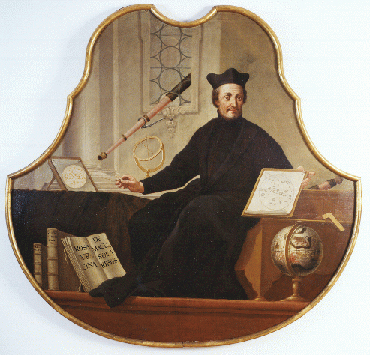
Christoph Scheiner
Christoph Scheiner started observing sunspots in March, 1611 and began a serious study of sunspots in October, 1611. His first publication Three Letters on Solar Spots which he had written to his friend Marc Welser appeared in January 1612 under the pseudonym “Apelles hiding behind the painting”. Scheiner was a German Jesuit mathematician who wished to preserve the perfection of the Sun and the heavens and so argued that sunspots were satellites of the Sun.
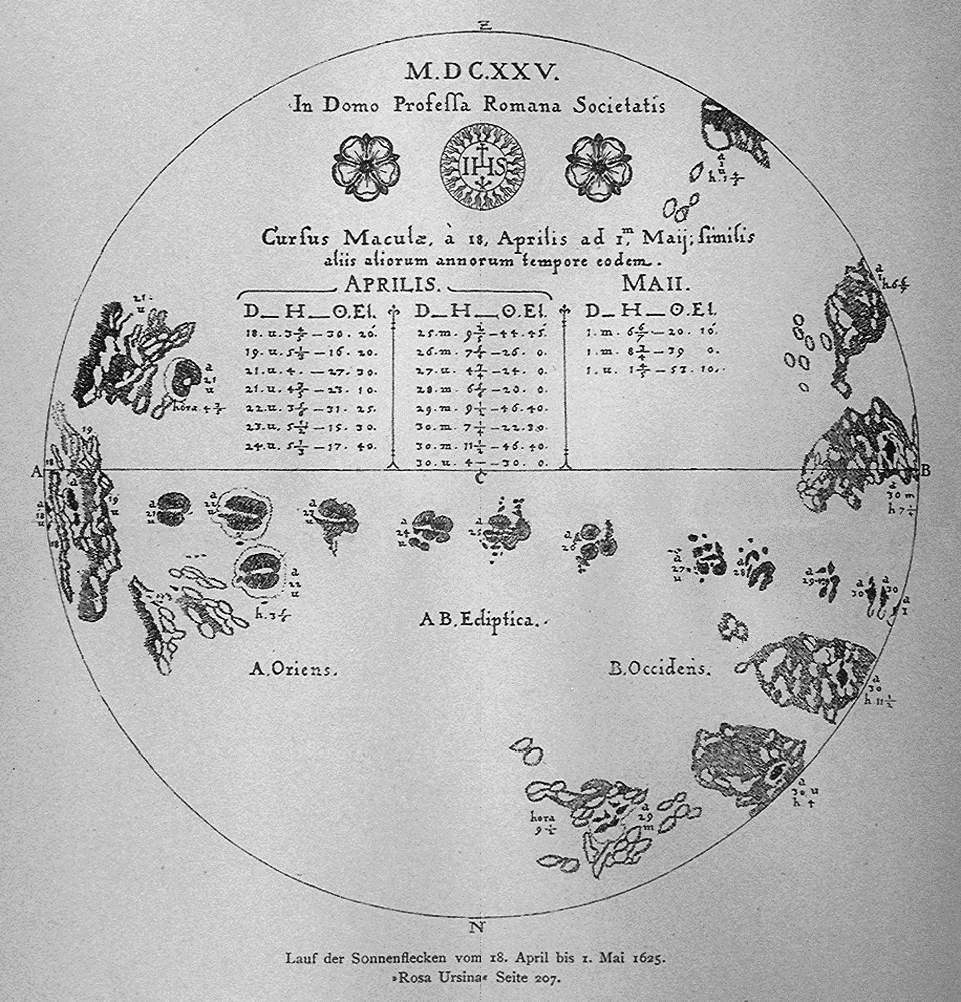
Sunspot Drawing by Scheiner
Scheiner heard about Galileo’s discoveries and obtained a telescope of his own. After verifying Galileo’s discoveries, he turned his attention to the Sun. He was neither the first to observe sunspots nor the first to publish on the subject; however the publication Three Letters on Solar Spots sent to Marc Welser was the start of a controversy with Galileo over the nature of sunspots. The Jesuits held a conservative stand on cosmological issues, insisting on the perfection of the heavens, including the Sun, and Scheiner postulated that sunspots were caused by shadows as the orbits of satellites crossed the disk of the Sun. Welser invited Galileo to comment on Scheiner’s letters. Galileo responded with two letters to Welser of his own in which he argued that sunspots are on or near the surface of the Sun, that they change their shapes, that they are often seen to originate on the solar disk and perish there, and that therefore the Sun is not perfect. After a series of letters Galileo won the dispute.
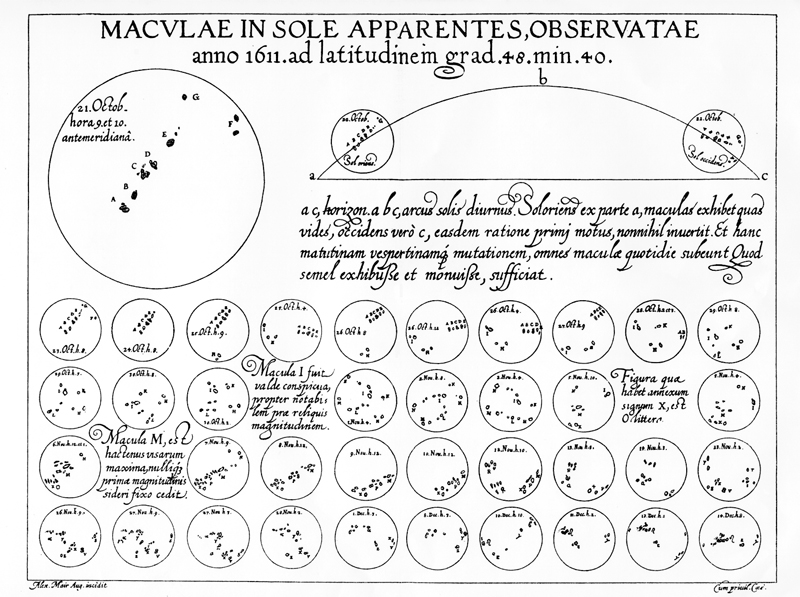
Rosa Ursina
Cristoph Scheiner continued to observe and study sunspots and in 1630 he published Rosa Ursina. In Rosa Ursina Scheiner agreed with Galileo that sunspots are on the surface of the Sun or in its atmosphere and that the Sun is therefore not perfect. However, in the first volume of Rosa Ursina Scheiner launched an attack on Galileo. In Galileo's publication Assayer in1623, he had made several remarks about others who had tried to steal the priority for some of his findings and discoveries. Galileo did not cite specific names and Scheiner thought the remarks were directed against him. Scheiner’s hostility towards Galileo may have been instrumental in starting the process that ended in Galileo’s infamous trial by the Roman inquisition for heresy in 1633. Rosa Ursina became the standard treatise on sunspots for more than a century. Shortly after the appearance of Rosa Ursina sunspot activity decreased drastically due to the Maunder Minimum (1645-1710), and therefore Scheiner’s work was not superseded until well into the eighteenth century.
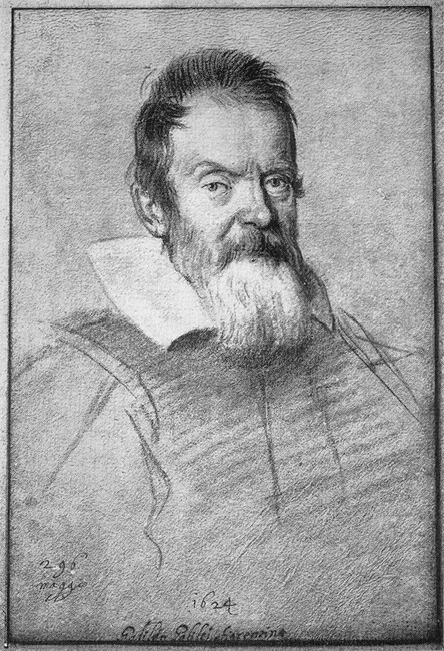
Galileo Galilei
Galileo claimed to have discovered sunspots in the summer of 1610, however there is no evidence that Galileo recorded or studied sunspots until April, 1612. There are many myths and misconceptions about the controversies surrounding the life of Galileo and what he did or did not discover before other scientists and/or observers. What is true about his life is that his greatest contributions to science were his applications of mathematics and experimentation to the study of motion. Since Aristotle, philosophers and naturalists had concerned themselves with understanding the causes of motion. Galileo dropped all Aristotelian talk of why things moved and focused instead on the how, through painstaking observations and measurements. Instead of "essences" and "natural places," Galileo sought quantifiable entities such as time, distance, and acceleration to describe the way everyday objects move, bend, break, and fall. His emphasis on the practical application and value of science set him apart from most philosophers and scientists of his time. Galileo's genius was his ability to observe the motions of the natural world and describe them in terms of mathematical proportions. For these achievements, Albert Einstein described Galileo as "the father of modern physics—indeed of modern science altogether."
Back to Ice Core Index


